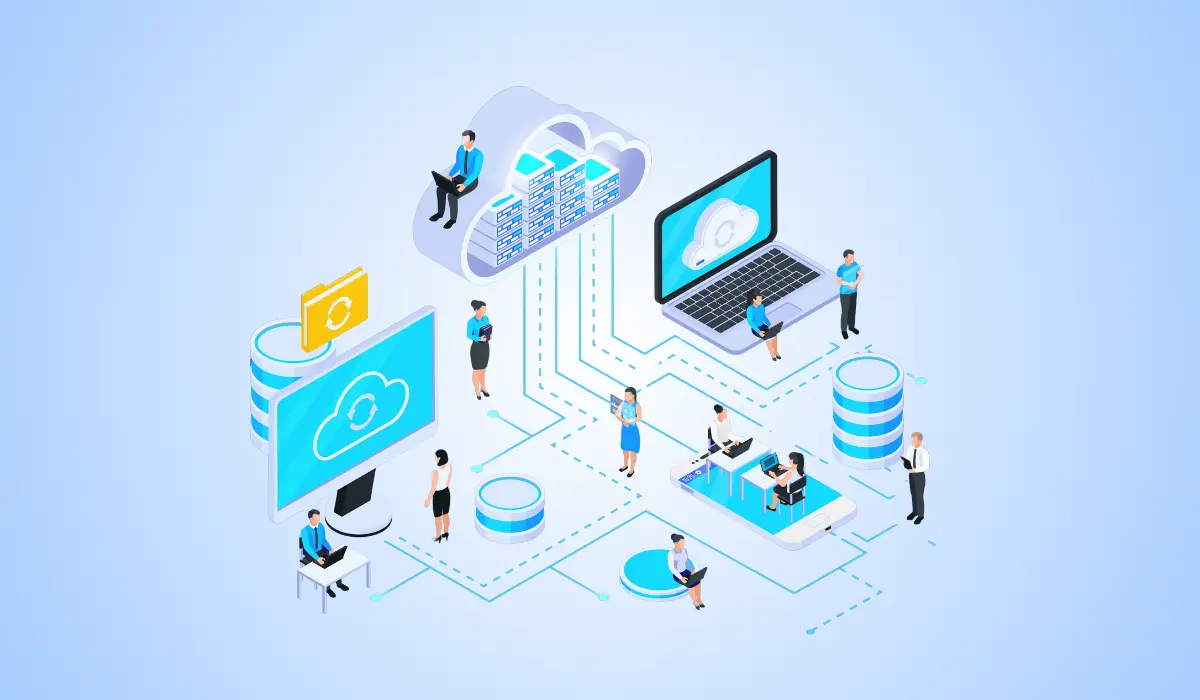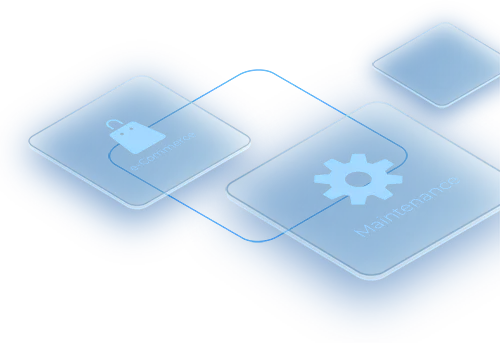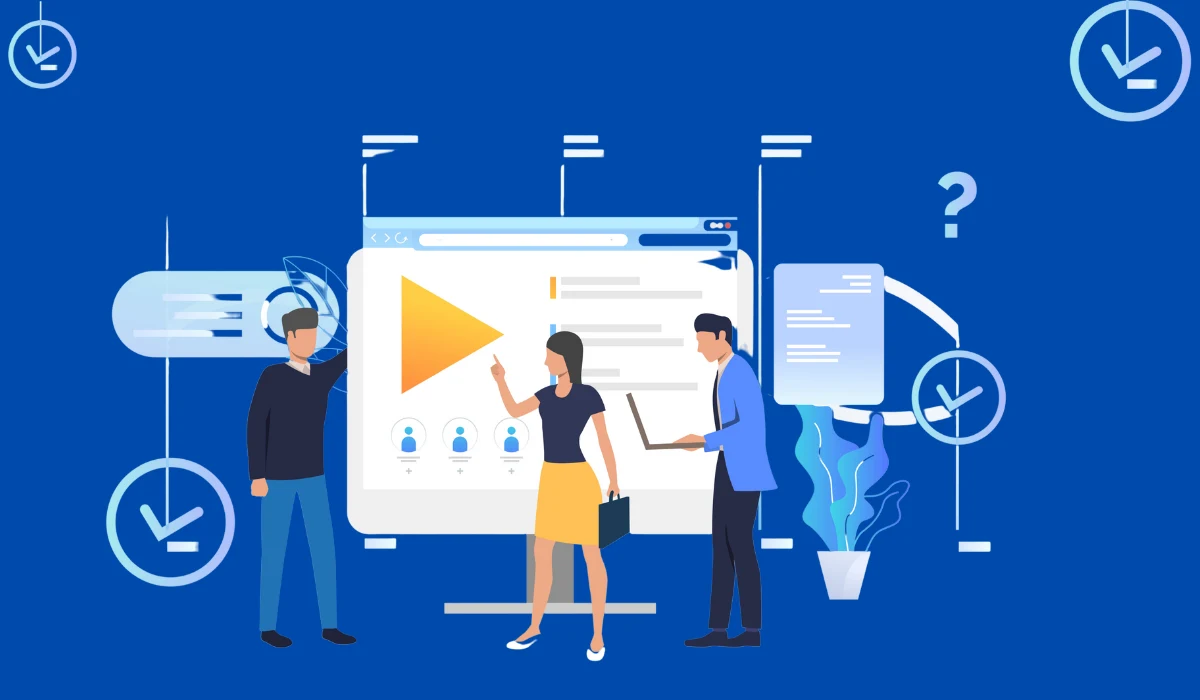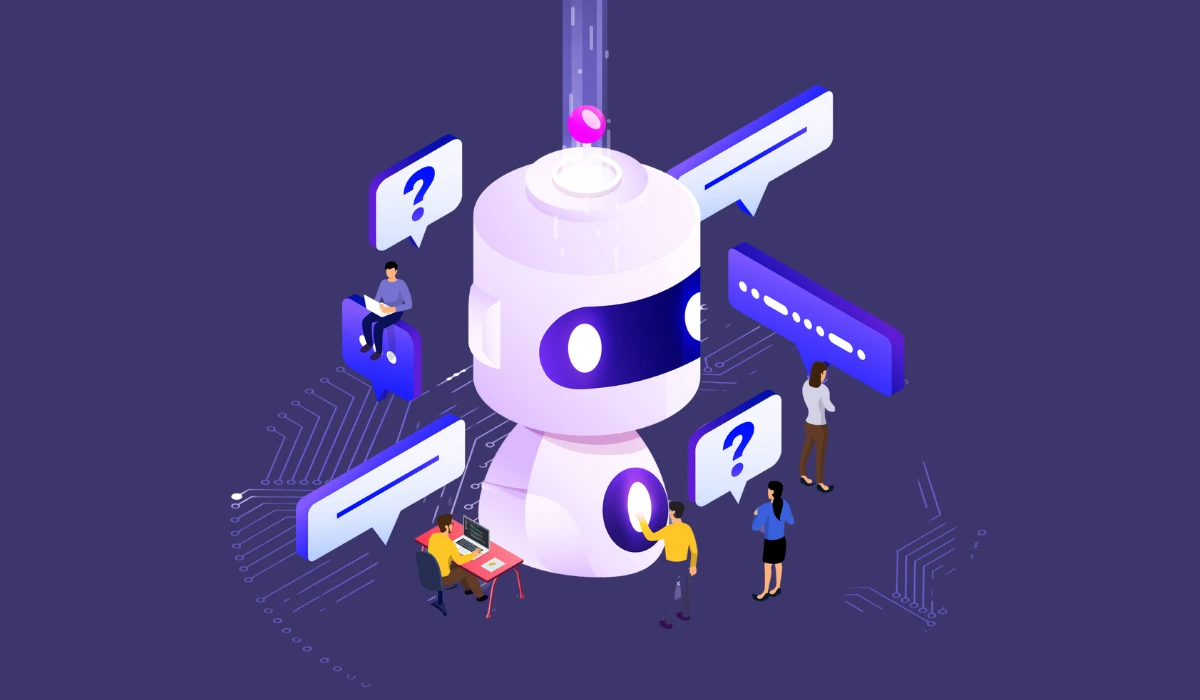These two teams have separate tasks in a company, but there are some areas where their responsibilities come together.
Utilizing this comprehensive guide for HR and payroll software can significantly enhance the operational efficiency of your company by facilitating seamless collaboration between these two departments.

Content Index
- Importance of HR and Payroll Software for Businesses
- Understanding HR Software
- Understanding Payroll Software
- Why You Need HR and Payroll Software in Your Business
- Integration of HR and Payroll Software
- Choosing the Right HR and Payroll Software
- Implementing HR and Payroll Software
- Types of HR and Payroll Software
- Future Trends in HR and Payroll Software
- Conclusion
Importance of HR and Payroll Software for Businesses
HR payroll software offers a compelling advantage to enterprises by eradicating the necessity for distinct HR and payroll frameworks.
This results in significant cost savings and time benefits, which improve business operations and profitability.
It enhances the effectiveness of both payroll and HR services and makes it possible for streamlined and thorough reporting.
The software’s outstanding versatility enables customized settings and enhances the employee experience. It encourages seamless remote access, supporting connection in a scattered workplace.
Workforce autonomy is increased by the integration of employee self-service portals, and the software guarantees a controlled and structured data flow.
Fundamentally speaking, HR payroll software offers a range of advantages like integrated efficiency, flexible customization, improved employee experience, and regulated information transmission, eventually optimizing company outcomes.
In this blog you can learn about a guide for HR and Payroll software that simplifies the intricate processes, ensuring efficient management of employee-related tasks and financial transactions.
In this guide for HR and Payroll software, you will learn about how HR and payroll software simplify intricate processes, ensuring efficient management of employee-related tasks and financial transactions.
Understanding HR Software
Outlined below what is HR software is, along with its essential features and advantages.
First of all, let us discuss what is HR and payroll software and its various features and advantages it brings to your firm.
What Is HR Software
HR software optimizes a range of human resources functions, spanning from employee integration to payroll and benefits oversight.
Through the utilization of HR software and personnel operations utilities, you gain the capacity to:
- Devise recruitment approaches
- Sustain performance appraisal systems
- Monitor labor hours
- Administer employee details and financial matters
These resources also economize your business’s time, finances, and assets by automating numerous formerly manual assignments.
Tasks that once demanded extensive paperwork from an HR unit can now be swiftly accomplished within minutes.
Key Features and Functionalities of HR Software
Listed below are some of the key features of HR software:
- A centralized HR system keeps everything in one location. The HR team can access the personal data of the employees at any time. It has the ability to manage HR data from several locations that are located throughout the world.
- Employee Self-Service allows them to access their information from any location. In the event of a mistake, they can fix them, leading to accurate personnel data. Employee self-service can help the HR department save a lot of time.
- It might be annoying to manually track time and attendance, and this can lead to incorrect payroll. The Time and Attendance Tracking tool allows for the clocking in and out of employees. And human resource management systems can record the real working hours. Additionally, businesses might continue to adhere to certain labor rules.
- Performance management of an employee takes a lot of time. However, the process of managing and evaluating performance can be expedited with the appropriate HR software. Employees are assessed using the HRMS’s performance management component based on their attendance, objectives, training, and other Key Performance Indicators (KPIs).
HR functions cover a wide range of responsibilities necessary for efficient employee management.
Onboarding, which ensures seamless employee integration, performance management, which evaluates and improves employee performance, training and development, which fosters skill growth, benefits administration, which manages employee perks, compensation management, which handles salaries and incentives, employee relations, which addresses concerns, and compliance with labor laws and regulations are some of these.
In addition, HR manages employee files, assists with conflict resolution, and plans for organizational development.
Together, these varied roles help to create a positive, effective work environment that harmonizes the objectives of the individual and the business.
The complete guide to HR software offers comprehensive insights into streamlining human resource operations for enhanced efficiency and organizational success.
Benefits of Using HR Software
The utilization of HR software offers a clear avenue to gain a competitive edge for businesses. However, precisely what advantages HR software can it furnish you with?
- Less time should be devoted to administrative work
- Get rid of human error
- Organise employee data better
- Obey the law and the rules
- Simplify procedures
- Effectiveness and productivity
- Cost Reduction
You can go through our blog about the benefits of HR and payroll software to learn more about the advantages it brings to your company.
Understanding Payroll Software
Provided below is an overview of Payroll software including its fundamental features and benefits.
What Is Payroll Software
Payroll software, predominantly cloud-based, automates the computation of employee pay, encompassing gross wages, deductions (such as taxes and insurance), and net earnings.
This software operates as an independent application, capable of collaborating with various business software like accounting and HR tools.
Alternatively, it functions as a part of a broader human capital management system, or an all-encompassing platform merging payroll and HR functions.
This integrated approach empowers businesses to oversee every facet of the employee journey, from recruitment to retirement, within a unified ecosystem.
Key Features and Functionalities of Payroll Software
Numerous enterprises seek payroll software providers that offer beyond foundational functions. The subsequent features are commonly found in most payroll software systems.
- Time and Attendance tracking is one of the key features of payroll software. If you have hourly workers, you need a trustworthy method to keep track of their working hours and fairly pay them each pay period.
- Payroll reports provide a rapid snapshot of vital financial data linked to payroll matters for business proprietors. At the very least, your payroll software must produce reports outlining details such as workers’ compensation premiums and contributions to payroll taxes.
- Employee self-service portals in their most comprehensive form offer functionalities enabling employees to independently submit tax documents, make benefit selections, ask for time off, and record their attendance by clocking in or out.
- In employee benefits administration, certain benefits are subtracted directly from employees’ wages, encompassing their personal contributions to employer-provided healthcare schemes. Find payroll software that automatically deducts benefit contributions from employees’ paychecks and distributes those amounts to the relevant parties if you offer benefits like health insurance and retirement programs.
Payroll software’s most fundamental function is to figure up how much you owe each employee for their time and labor.
Additionally, it should maintain precise payroll records to guarantee that you fulfill your legal and tax requirements as an employer.
Benefits of Using Payroll Software
Implementing optimal payroll software can significantly diminish the manual workload required from HR professionals.
Simply input the essential data regarding employee compensation, packages, and documentation, and the software will commence the payroll processing procedure immediately.
Now let us see the key benefits of payroll software.
- Accurate computations without errors
- Reduce time consumption
- Ensuring the confidentiality of information
- Support system for clients
- Timely reminders
Why You Need HR and Payroll Software in Your Business
Businesses must use HR and payroll software to function better, be more productive, and adhere to regulations.
Many tasks that take a lot of time and may result in errors if done by hand are automated by this form of software.
Automating HR tasks makes it much simpler to conduct things like onboarding new employees, monitoring attendance, controlling vacation time, and evaluating employee performance. Both the HR staff and the employees benefit from the time savings.
Payroll software, on the other hand, ensures that employees are paid correctly, with no errors in their salary, taxes, or perks.
This prevents difficulties like legal hassles or financial problems that could arise if there were faults. Additionally, because everyone is paid on time thanks to this program, workers are happier and more content.
These software programs also ensure that confidential employee information is kept secure by centralizing it and limiting who has access to it. This safeguards private information and prevents entry by unauthorized parties.
Additionally, HR and payroll software provides useful information and insights that support making wise decisions. It makes it easier to spot trends, evaluate how effectively the workforce is performing, and estimate how many workers will be required. Important information of this nature aids in efficient resource management and long-term planning.
These are some of the reasons your business needs HRMS. Implementing advanced HRMS software streamlines administrative tasks and enhances overall workforce management efficiency.
Integration of HR and Payroll Software
Businesses can gain numerous benefits from a unified HR and payroll solution, such as increased operational efficiency, strengthened adherence to regulations, improved employee satisfaction, and more robust reporting capabilities.
The significance of integrating HR and payroll processes lies in the elimination of duplicative files, convoluted paper trails, and the need for multiple passwords.
This integration leads to an enhanced employee experience, as administrative tasks are streamlined through automation. With reduced manual intervention, there’s a decreased likelihood of errors occurring.
Additionally, this integration fosters increased transparency and offers improved reporting mechanisms, allowing for better-informed decision-making. Compliance with regulations is also bolstered, ensuring adherence to legal requirements.
Functioning as an essential guide for HR and payroll software, this integration becomes a cornerstone for businesses aiming to enhance operational efficiency.
When these important tasks are combined, companies can enjoy the benefits of smoother work processes, accurate record-keeping, and a better experience for both employees and HR staff.
Bringing together HR and payroll software arranges and speeds up work, saves time, makes data easier to see, follows rules better, boosts how employees feel, and gives immediate data understanding.
This integration makes things work better, be more correct, and keep the money side stable for your organization.
Choosing the Right HR and Payroll Software
Selecting the correct HR and payroll software is super important for companies. You need to think about a few things, like how big your company is, how tricky your HR and payroll tasks are, and how much money you can spend on the software.
Lots of different HR and payroll software options are out there. They go from basic ones for small businesses to really detailed ones for bigger companies.
Some important things to consider in HR and payroll software are managing rules, keeping track of employee info, noting when people work, and sorting out their payments.
Before you jump into getting HR and payroll software for your company, there are five big things you should really think about:
- Return On Investment
- Scalability
- Customer Service
- Sophisticated Data Security
- Integrated and Adaptable
It’s a good idea to check if the software comes with a mobile app that’s really smooth to use on your phone.
This way, you can do your HR and payroll tasks from anywhere without any trouble. Don’t forget to think about the cost of the software. Some might be pricey, while others could be more affordable and fit your budget better.
When you’re choosing, make sure the software isn’t confusing. It should have buttons and things that are easy to find and use, so you don’t get lost.
Also, consider how easy or difficult it is to start using the software. You don’t want something that’s really hard to set up and makes you feel confused when you’re trying to make it work.
We have prepared a detailed guide about factors to consider while choosing HR software, you can check out that too.
Implementing HR and Payroll Software
Implementing HR and payroll software might seem tricky, but if you do it right, it can work well. First, you need to know how your company does HR and payroll stuff and how the software fits in. Also, make sure your team knows how to use it.
To make sure things go well, team up with the people who make the software. Make a plan and a timeline for how to put the software in place. This plan should have time for testing and teaching, so everyone can use the software the right way.
This information provides a helpful guide for HR and payroll software implementation, emphasizing the importance of understanding your company’s processes and collaborating with software providers for successful integration.
Steps involved in implementing HR and Payroll software include:
- Assessment and Planning
- Software Selection
- Data Gathering and Preparation
- Customization and Configuration
- Training
Types of HR and Payroll Software
Many present-day companies utilize Human Resources (HR) software to assist in handling their employees.
By picking an updated HR and payroll software that complements your business functions effectively, your company can efficiently oversee its workforce, ensuring employee satisfaction and boosting productivity. Now let us understand the different types of HR software available in the market:
Cloud-Based Solutions
Cloud-based HR management system software offers specialized HR functions, including payroll and recruitment systems.
However, the superior choice is a comprehensive cloud-based HR system that encompasses all HR aspects. These systems empower you to oversee everything from payroll to training in a unified platform, streamlining your efforts and conserving resources.
The demands on modern HR are swiftly increasing due to workforce changes and evolving legal requirements.
Additionally, HR operations face pressure from upper management due to substantial expenses related to human resources, like absenteeism and skills gaps.
Nowadays, numerous businesses are prioritizing HR to achieve notable cost reductions and overall success.
Advantages of Cloud-based Solutions
- Adaptable: Reach your information whenever and wherever you need it.
- Cost-effective: Opt for a monthly or yearly subscription instead of investing in expensive software systems.
- Time-efficient: Streamline everything in a single location, eliminating the need for cumbersome separate software.
- Enhanced features: Utilizes cutting-edge technology to provide more advanced capabilities.
- Safety: Maintain complete control over user access and securely store all your data in a single location.
Disadvantages of Cloud-based Solutions
- Internet Connectivity: In cloud computing, data is stored in the cloud, and internet connectivity is essential to access it.
- Limited Control: Cloud users have limited control over the functioning of services due to the provider’s full management of the infrastructure.
- Vendor Lock-in: The major drawback of cloud computing is vendor lock-in, where switching between providers can be challenging due to varying platforms.
On-Premise Solutions
On-premises solutions encompass software and applications installed and managed via a dedicated server situated at a company’s physical location.
These serve as a conventional choice in contrast to cloud-driven options, which are hosted off-site on the internet and reached through browsers, mobile apps, or personalized interfaces.
The company’s IT division holds the duty of upkeeping on-premise infrastructure, allowing the business to retain full authority over server hardware, data protection, and setup.
Advantages of On-premise solution
- Enhanced Protection: On-premise solutions provide heightened data security compared to cloud systems, ensuring that sensitive data and information remain accessible solely to authorized individuals.
- Fewer Maintenance Costs: By adopting on-premise solutions, you take ownership of hardware infrastructure, applications, and software programs. This ownership leads to lower maintenance costs.
- Exceptionally Customizable: On-premise solutions offer a higher level of customization compared to cloud systems based on subscriptions.
Disadvantages of On-Premise Solution
- Resource-Intensive: On-premise solutions demand complete ownership of responsibilities, spanning from initial setup to ongoing maintenance, necessitating significant resource allocation.
- Space-Intensive: On-site solutions occupy additional physical space within your business premises, given that the entire infrastructure is situated within, requiring extra room in your workspace.
- Potential for Increased Inactivity: Instances of extended downtime can occur when hardware experiences issues or software necessitates updates. The restoration of operations might be prolonged if internal teams are unable to resolve the issue independently, leading to the involvement of external specialists.
Future Trends in HR and Payroll Software
This complete guide for HR and payroll software navigates the upcoming trends that will shape the future landscape of these crucial HR and payroll functions.
In the coming year, those who handle payroll and HR tasks will face six big changes. One major shift is the growing use of Technology. Cloud-based systems for payroll will become even more important in the coming years.
These systems make things quicker, reduce mistakes, and work well with other HR tools. But it’s important to pick real cloud solutions that offer self-service, save money, and keep data safe.
Compliance is also becoming more important. This means following rules and laws. Technology can help here too.
Some payroll systems can do the hard work of following rules for taxes. When you choose a payroll service, think about the ones that work in the cloud, make tasks smoother, and allow for special reports and automatic tasks.
Keeping data safe is a big deal as well. Because Technology is used more, payroll systems need strong protection.
This means things like secret codes, secure logins, and ways to get data back if something goes wrong. Bad online attacks are getting worse, so companies need to make sure they are safeguarding the company’s HR details.
This helps stop problems with their image and legal trouble. By spending money on safe payroll technology and teaching workers about tricks used by online attackers, companies can stay safe.
The changes from the pandemic are still here, and this means that remote and mixed work setups are common.
In the coming years, the way payroll is done needs to change too. Companies can think about giving workers ways to get some of their money before payday.
Another new thing is that workers are doing more things themselves online. They can use special websites to do tasks and fix mistakes. This helps payroll teams.
As we get closer to the next year, the people who work on payroll and HR need to get ready for these changes. It will help their companies get set for the future.
One thing is for sure, the role of HR and payroll software is getting more and more significant in every business organization that handles human resources.
Conclusion
Effective utilization of HR and payroll software holds paramount importance for enterprises aiming to enhance the efficiency of their HR and payroll operations.
This facilitates not only the conservation of time and resources but also guarantees adherence to regulations. Through the prudent selection of appropriate software, skillful implementation, and the harnessing of data for informed judgments, companies can elevate their HR procedures significantly.
This comprehensive guide for HRMS software offers invaluable insights into selecting, implementing, and optimizing the right solution for your organization’s human resource management needs.
If you are in search of a comprehensive HR solution please visit ERP software solution to find the apt software for your business.
If you need further understanding of HR and Payroll software in detail you can read our following blogs!








